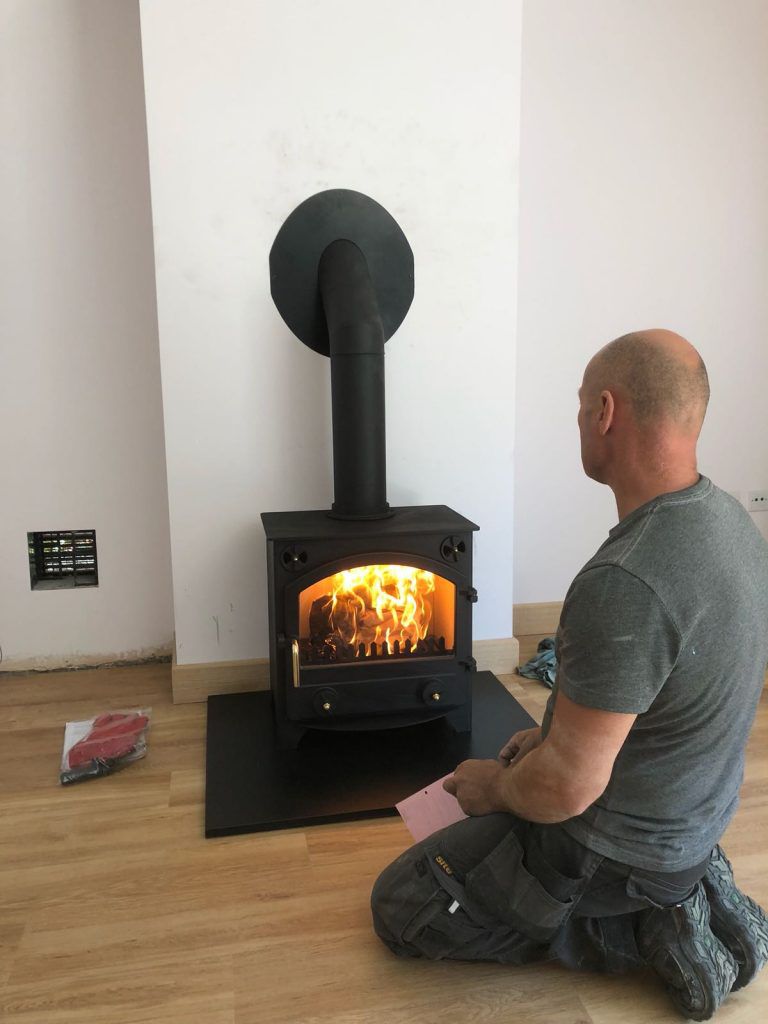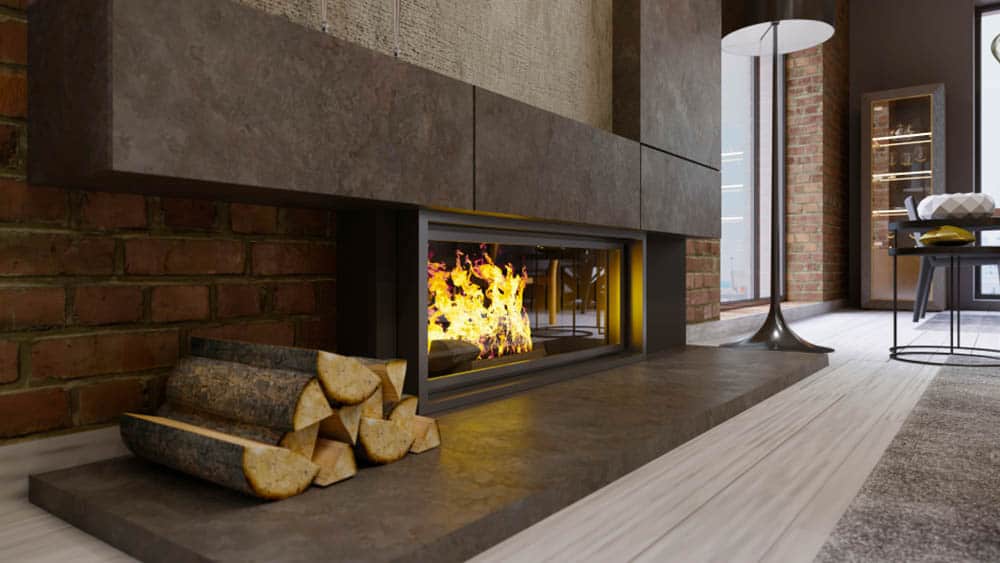Coal should not be burned in a wood stove as it burns at a higher temperature than wood, potentially damaging the stove and causing ash buildup that reduces efficiency. Coal, when burned in a wood stove without a multi-fuel grate, can lead to expensive repairs or replacement.
It is not recommended to burn coal in a wood stove due to these risks and the specific design requirements for different types of fuel. In contrast to wood, coal produces hotter temperatures and more ash, which can negatively impact the performance and longevity of a wood stove.
Proper fuel selection is crucial for optimal stove operation and safety.

Can You Burn Coal In A Wood Stove?
Can You Burn Coal in a Wood Stove?
When burning coal in a wood stove, the higher burning temperature of coal can potentially damage the stove if it lacks a multi-fuel grate designed for alternate fuel types. Additionally, the ash produced by coal can accumulate quickly, leading to reduced stove efficiency.
Compared to wood, coal burns at a much higher temperature, which can impact the stove’s components. It’s crucial to ensure that the wood stove is equipped to handle the intensity of heat generated by burning coal.
Anthracite nut coal is a suitable option for wood stoves with cast iron grates and proper airflow control. This type of coal burns longer and creates a consistent, smokeless, and intense heat, making it a good choice for wood stoves.

Credit: cielowigle.com
Potential Damage To Stove
Burning coal in a wood stove can cause potential damage since it burns at a higher temperature, possibly harming the stove if not designed for multi-fuel. It also produces excess ash, which can clog the stove and reduce efficiency. It’s essential to ensure your stove is suitable for burning coal to prevent damage.
Higher Temperature Of Coal
If coal is burned in a wood stove, it can reach temperatures significantly higher than those produced by burning wood. This higher temperature can potentially damage the stove, especially if it is not designed to withstand the intense heat generated by burning coal.
Significant Ash Production
Another issue with burning coal in a wood stove is the significant amount of ash that coal produces. This ash can accumulate quickly and clog up the stove, leading to reduced efficiency and potential issues with airflow.
Differences In Burning Temp
Burning coal in a wood stove has significant differences in burning temperature compared to wood. Coal burns at a much higher temperature than wood, which can potentially damage the stove if it is not equipped with a multi-fuel grate specifically designed for burning fuels other than wood. Additionally, coal produces a substantial amount of ash, which can quickly clog up the stove, leading to reduced efficiency.
Impact On Stove Efficiency
The burning of coal in a wood stove can impact its efficiency due to the higher burning temperature and the production of significant ash. This can result in reduced heat output and increased maintenance requirements, potentially leading to higher operating costs.
Safety Concerns With Burning Coal
Burning coal in a wood stove poses safety concerns, especially if the stove is not designed to handle coal. It can lead to overheating and potential damage to the stove, posing fire hazards. Additionally, burning coal indoors can release toxic fumes, such as carbon monoxide, which can be harmful to human health. It is crucial to adhere to the manufacturer’s guidelines and recommendations to ensure safe and efficient operation of the stove.

Credit: medium.com
Types Of Coal Suitable For Wood Stoves
When it comes to burning coal in a wood stove, it’s essential to know which types of coal are suitable and safe to use. Not all coal varieties are compatible with wood stoves due to their different burning properties and heat outputs. Below, we’ll discuss two common types of coal that can be burned in a wood stove: Anthracite Coal and Briquettes and Soft Bituminous Coal.
Anthracite Coal
Anthracite coal is often considered the best option for wood stoves due to its unique characteristics. It is a hard, dense, and high carbon coal that burns cleanly and produces intense heat. Here are some key points to know about anthracite coal:
- Anthracite coal burns smokeless, making it an ideal choice for wood stoves.
- It has a longer burn time compared to wood or soft coal, providing consistent and efficient heat.
- The high carbon content in anthracite coal results in a hot and even heat output, keeping your space warm for extended periods.
- This type of coal produces minimal ash, reducing the need for frequent cleaning and maintenance of your wood stove.
Briquettes And Soft Bituminous Coal
Briquettes and soft bituminous coal are another option for burning in wood stoves. They are commonly used in multi-fuel stoves that offer the flexibility of burning various types of fuels. Here’s what you need to know about briquettes and soft bituminous coal:
- Briquettes are compressed blocks of coal dust or other combustible materials, making them convenient to handle and store.
- Soft bituminous coal releases more smoke and produces a lower heat output compared to anthracite coal, but it can still be used effectively in wood stoves.
- Using soft bituminous coal may require more frequent cleaning and ash removal compared to anthracite coal.
- It’s important to ensure your wood stove is designed to handle the specific type of coal you plan to burn. Some stoves may require additional accessories or modifications to accommodate briquettes or soft bituminous coal.
In conclusion, anthracite coal and briquettes or soft bituminous coal are suitable options for burning in wood stoves. However, it’s crucial to follow the manufacturer’s guidelines and recommendations for your specific wood stove to ensure safe and efficient operation. Always choose high-quality coal from reputable sources and maintain proper airflow and ventilation in your wood stove for optimal performance.
Considerations For Burning Coal And Wood Together
Burning coal in a wood stove can potentially damage the stove due to higher temperatures and ash buildup. It’s crucial to have a multi-fuel grate for safe burning of coal alongside wood to prevent damage and maintain efficiency. Consider proper equipment and maintenance when combining coal and wood burning.
Epa Guidelines
When considering burning coal and wood together in a wood stove, it is important to be aware of the guidelines set forth by the Environmental Protection Agency (EPA). The EPA has established regulations and standards for emissions from wood and coal stoves to ensure the safety and health of both individuals and the environment. These guidelines specify the acceptable levels of pollutants and emissions produced by wood and coal burning, which can help determine if it is permissible to burn coal in a wood stove.
Challenges Of Finding Suitable Stoves
Finding a suitable stove for burning both coal and wood can be a challenge. Wood stoves are typically designed to burn wood logs, while coal stoves are specifically designed to burn coal. Therefore, not all wood stoves are equipped to handle the high temperatures and unique characteristics of burning coal. It is crucial to find a stove that is specifically designed for dual fuel burning, or has a multi-fuel grate that allows for efficient burning of both wood and coal. It is also important to consider the size and capacity of the stove, as coal requires more space and combustion air compared to wood.
In addition, the type of coal being burned should also be taken into consideration. Anthracite coal, for example, is known for its cleaner burning properties and higher heat output, making it a preferred choice for burning in wood stoves. Soft coal, on the other hand, tends to produce more smoke and pollutants when burned, and may not be as suitable for use in wood stoves.
- EPA Guidelines
- Challenges of Finding Suitable Stoves
Overall, while it is possible to burn coal in a wood stove, it is important to carefully consider the EPA guidelines and the challenges of finding a suitable stove for dual fuel burning. It is essential to choose a stove that is specifically designed for burning both coal and wood, ensuring efficiency and compliance with emissions standards. By following these considerations, you can safely and effectively burn coal and wood together in your wood stove.

Credit: www.wakefordfireplaces.com
Frequently Asked Questions For Can Coal Be Burned In A Wood Stove
What Happens If You Burn Coal In A Wood Only Stove?
Burning coal in a wood-only stove can damage it due to higher temperatures and ash buildup, reducing efficiency.
What Happens If You Burn Charcoal In A Wood Stove?
Burning charcoal in a wood stove can create higher temperatures and damage the stove. It produces more ash, clogging the stove and reducing efficiency. It’s not safe for indoor use due to toxic fumes. Stoves without a multi-fuel grate are not suitable for burning coal.
Can You Burn Anthracite Coal In A Wood Stove?
No, it is not recommended to burn anthracite coal in a wood stove. Anthracite coal burns at a much higher temperature than wood and can damage the stove if it does not have a multi-fuel grate. It also produces a significant amount of ash, which can clog the stove and reduce efficiency.
What Is The Best Coal To Burn In A Wood Stove?
Anthracite coal is the best coal to burn in a wood stove. It has more energy content, longer burn time, and consistent heat compared to other coal types.
Can Coal Be Burned In A Wood Stove?
Yes, coal can be burned in a wood stove. However, there are a few considerations to keep in mind.
Conclusion
Burning coal in a wood stove can be risky due to its high temperature and ash production. It is crucial to have a multi-fuel grate and proper airflow for burning coal effectively. To ensure safety and efficiency, it’s best to use anthracite coal in a wood/coal stove with caution.